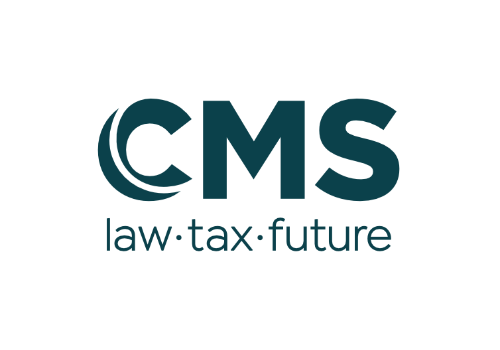On 15 July 2021, the Ukrainian parliament adopted draft Law No. 5009 “On Amendments to Certain Legislative Acts of Ukraine on Simplification of Connection to Electric Networks”, which was created to resolve existing complications for the allocation of land, development of grid-connection design, obtaining various approvals, access to information on the technical capacity of the distribution grids, environmental impact assessment and for other issues arising in the course of obtaining access to electrical grids.
The Law (registration number 1657-IX) went into effect on 20 August 2021, except for certain provisions that will come into force six or 18 months later.
The amendments to several principal legislative acts introduced by the Law include:
- Land Code of Ukraine;
- Law of Ukraine “On Topographic-Geodetic and Cartographic Activities”;
- Law of Ukraine “On Land Management”;
- Law of Ukraine “On Community Development”;
- Law of Ukraine “On Energy Lands and Legal Regime of Special Zones of Energy Facilities”;
- Law of Ukraine “On Regulation of the Town-Planning Activities”;
- Law of Ukraine “On State Land Cadastre”;
- Law of Ukraine “On State Registration of Real Rights to Immovable Property and their Encumbrances”;
- Law of Ukraine “On Peculiarities of Access to Information in the Spheres of Electricity Supply, Natural Gas, Heat Supply, Centralized Hot Water Supply, Centralised Drinking Water Supply and Sewerage”;
- Law of Ukraine “On Electricity Market Law”;
- Law of Ukraine “On Environmental Impact Assessment”;
- Law of Ukraine “On Amendments to Certain Legislative Acts of Ukraine Aimed at Preventing the Occurrence and Spread of Coronavirus Disease (COVID-19)”;
- Law of Ukraine “On the National Infrastructure of Geospatial Data”.
Below we present a summary of how this Law is designed to improve procedures of access (i.e. connection) to electrical grids and facilitate improvement of the grid infrastructure in general.
Land and construction
- The Law introduces the definition of “linear objects of energy infrastructure” (i.e. Infrastructure Objects), which is “a system of energy infrastructure facilities, including on-ground, above-ground and underground facilities connected by overhead and cable lines and designated for transmission and distribution of electricity, as well as buildings and structures with an area of up to 200 square metres, including but not limited to, electrical substations, transformer substations, distribution points and devices, supporting structures, ancillary equipment associated with them by a single technological process that ensures safe and reliable operation, production, transmission and distribution of electricity and heat”. Infrastructure Objects can be located on a land plot of any category, meaning that there is no need to change the designated purpose of land. A similar regulation had existed before but applied to a much narrower list of items: power lines, transformer substations, distribution points and devices.
- Approval of the Cabinet of Ministers of Ukraine (CMU) is no longer needed to change the designated purpose of state or municipal forestry land for the construction of Infrastructure Objects.
- The Law clarifies that users of state or municipal land may now provide easements for the construction of Infrastructure Objects without a landlord’s approval.
- If an easement is granted by a land user (i.e. tenant) of state or municipal land, it may be established without agreeing over its boundaries with the land owner. A land owner’s approval is required only if the land plot is either not provided into use (i.e. leased), or provided into use, but the easement agreement is entered into directly with the land owner. In turn, if a land owner directly grants an easement for the land plot provided into use, obtaining the land user’s (i.e. tenant’s) approval is obligatory.
Procedural aspects of using lands for the needs of Infrastructure Objects are also simplified by the Law.
Grid connection
- It is forbidden under the Law to reject a connection to the transmission or distribution grid on grounds not explicitly provided for by the Electricity Market Law, to leave an application for grid connection unconsidered, and to return or refuse its acceptance.
A rejection to connect the customer’s electrical installation to the transmission or distribution grid must be linked to a specific provision of the Electricity Market Law.
- The Law also introduces a “single window” to simplify interaction with state and municipal bodies and other involved entities in relation to:
- the review and approval of the design documentation for construction and/or technical retrofitting of electrical networks connecting a customer’s electrical installations with the external grid (at the interconnection point) – electrical networks of external power supply;
- the review and approval of the design documentation for construction of Infrastructure Objects;
- obtaining information, documents, initial data, including available and earlier designed engineering and transport networks, conditions and restrictions, permits necessary for development and further coordination of the design documentation, performance of construction and installation and adjustment works;
- exchange of the relevant information, data and documents, which means that all documents and information exchange will only appear online. This improvement will be available from 20 February 2022 (i.e. six months after publication of the Law).
- The distribution system operator will be solely responsible for developing and agreeing with other stakeholders: of design documentation for construction and/or technical retrofitting of electrical networks of external power supplies if the capacity of a customer’s electrical installation does not exceed 400 kW; and land allocation measures needed in these cases. However, this new feature comes into force in 18 months (i.e. 20 February 2023).
- The Law extends the validity of technical conditions for alternative energy source projects (with the exception of solar power plants) until 31 December 2022. (This applies only to projects with a pre-PPA dated on or before 31 December 2019).
- Grid connection agreements concluded before the entry into force of the Electricity Market Law (of 11 June 2017) will expire on their expiration dates. However, if the parties have not agreed to a specific expiration date, they must either agree on a date or terminate the grid connection agreement until 1 January 2024. If this is not done, the agreement will automatically expire on this date.
- A transmission or distribution system operator must return any payment received from its customer as a grid connection cost if grid assets financed in this way were included in the regulatory asset base (RAB) of the respective network operator. This applies provided that the RAB regulation has been applied to it after the operators' transition to the regulation.
Environment concerns
The Law removes the requirement to conduct an environmental impact assessment (EIA) of projects involving construction of 110 kV aerial or cable power lines. Subsequently, the EIA remains obligatory only for construction of power lines carrying electricity at a voltage of 220 kV and above to a distance exceeding 15 km. The EIA requirements may also apply in other related cases such as during construction of 330 kV substations.
For more information on this Law and Ukraine's energy sector, contact your CMS client partner or local CMS experts: Vitaliy Radchenko, Natalia Kushniruk, Maria Orlyk.
Authors:
Vitaliy Radchenko, Partner, vitaliy.radchenko@cms-cmno.com
Natalia Kushniruk, Partner, natalia.kushniruk@cms-cmno.com
Volodymyr Kolvakh, Senior Associate, volodymyr.kolvakh@cms-cmno.com
Kateryna Korneliuk, Associate, kateryna.korneliuk@cms-cmno.com
Maksym Morozov, Associate, maksym.morozov@cms-cmno.com
Maria Orlyk, Partner, maria.orlyk@cms-rrh.com
Oleksandra Prysiazhniuk, Senior Associate, oleksandra.prysiazhniuk@cms-rrh.com
Taras Chernikov, Associate, taras.chernikov@cms-rrh.com

























